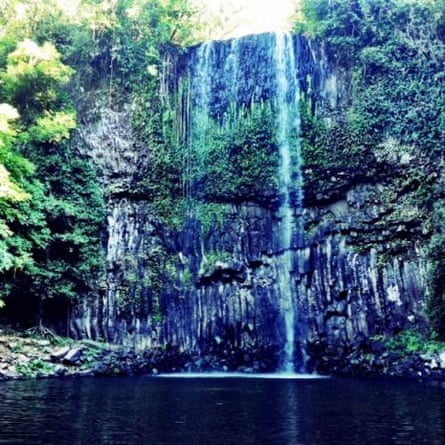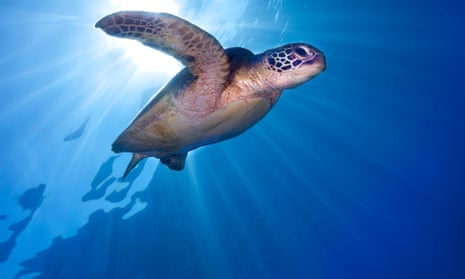North Queensland: land of crocodiles, venomous snakes, and majestic rainforest. What could possibly go wrong?
Not a lot, in fact, if you stay away from Cairns, a city with a “wild west” feel to it. Rural Queensland truly has a lot to offer for nature and landscape lovers: exotic animals, weird tropical fruits, luscious flora, waterfalls and delicious local products. The most striking part of the region is the intense mix of sounds and colours: the bright greens and turquoise blues couldn’t be brighter in a Brett Whiteley painting, and the sounds of the forest at night make you feel very small. Far away from centres of civilisation, it is an enchanting place.
Friday

1pm: Arriving in Cairns feels like stepping out in an oven: it is 33 degrees under the sun, and already I have the beginning of a heat rash. After signing in for our rental car, we head straight towards the Atherton ranges, a region two hours south of Cairns known for its local gourmet produces, which includes Daintree tea, coffee, forest honey, organic vanilla and dairy products. Lunch awaits at Mungalli Creek, a family-owned farm specialising in biodynamic yoghurts and cheeses. Planted at the top of the valley, you won’t have phone reception – but after trying their cheddar, this will be the least of your concerns.
The ploughman’s lunch would satiate even Goliath: with an assortment of soft cheeses, Mugalli’s own organic eggs, homemade mayonnaise, feta with marinated tomatoes, toasted bread and dips, the plate could easily be shared between two or three. The passionfruit yoghurt is one of the best I’ve ever tasted, and their range of homemade cheesecakes are as enticing as they are delicious (so much so that I had two slices; if you hesitate, go for the orange and chocolate one).

3pm: We head south towards waterfall region. We stop by Millaa Millaa, where Dutch tourists are brave enough to dip in the cold water, but there are a handful of waterholes to choose from (make sure you follow the waterfalls drive) to choose your favourite spots.
5pm: Our first night is spent at the Rose Gums Wildlife Reserve, a collection of private timber treehouses enveloped by pristine and protected forest wilderness. Our own private, two bedroom tree nest sits above the forest, and we make good use of the giant deck to watch dusk setting above the treeline (stargazing after dinner was spectacular). The beautiful property is surrounded by nine kilometers of trails which guests can explore at will. We decide to walk down the rose gums walk, which leads to (you guessed it) a giant rose gum tree. This was, by far, the mostmemorable moment of our north Queensland trip: we headed out just as the sun was setting, at which time the forest exploded with the sound of cicadas – so loud and so all-encompassing that I felt like I was surrounded by a hundred fire alarms going off at once. Spooky and magical.
In the morning, you can walk to the playtpus creek, join the owner as she feeds the lorikeets and, if you’re lucky, spot a the smallest kangaroo in the world, the musky rat-kangaroo.
Saturday
10am: It’s mid-morning and I am downing whiskey and rum: we are at Mt Uncle Distillery for a tasting. It’s frankly a bit much for my stomach at this hour, but all the spirits are produced on site, so I feel as if I have to put on a brave face and take one for the team. The clear winners: the gin, made with a blend of 14 Australian native botanics, and the iridium gold rum, so smooth it tastes like butter (and is best enjoyed on the rocks and nothing else).
11am: After alcohol, it’s time for a coffee. Skybury coffee is one of the biggest coffee producer in Australia – their plantation also produces bananas and papayas, and has been a family business for more than 30 years. Lunch on the deck, which overlooks the giant plantation, is recommended. Make sure you bring home some homemade coffee liqueur.

3pm: In the afternoon, we head to the Mossman Gorge visitor centre, a new Indigenous eco-tourism initiative which is also home to an art gallery (right now hosting all-male Aboriginal local artists, which is a rarity), a coffee, and a training centre. It is also the starting point of many Indigenous-led tours in the forest. Our local guide Cameron (who’s also an artist) takes us down tracks in the forest, sharing knowledge passed down to him from his Kuku Yalanji elders. We walk by bark shelters, sit to take in the lovely stream and its giant boulders, and follow Cameron as he points to culturally significant sites. It feels like an honour to listen to him as he shares stories about his land. You can listen to the sounds of the forest here:
6pm: From there, it’s a quick drive to the Silk Oak Lodge, our accommodation for the evening. Nested in the rainforest and overlooking the Mossman Gorge river, an assortment of different luxurious tree houses offer access to a swimming pool (pictured below), a restaurant (good enough food, although when I asked for a glass of port the bartender poured me an entire glass of wine worth – but who would complain?), and a fantastic open balcony bar area overlooking the stream.

This luxury all paled in comparison to one of the most basic pleasure offered by the lodge: exclusive use of the billabong, no more than 30 steps away from our bed. None of the other guests seemed to be tempted by it (I did see a snake swimming in it, after all), but the delight that comes with swimming alone in an open body of water surrounded by lush trees and dragonflies truly is unparalleled. It is so tranquil, and so quiet, that one could almost go skinny dipping (this is not a confession from this author). Combine this when a few hours of reading in a hammock on the deck, and my bliss was complete.
Sunday
10am: Use your morning to try jungle surfing in the Daintree forest, a Unesco world heritage site. Hooked (securely) with a harness, you hop from tree platform to tree platform. As you zip through giant ancient trees, you can spot incredible vistas of the nearby barrier reef between jumps. It’s a unique way to enjoy the forest, but those afraid of heights should abstain (the poor older British lady who was with us was absolutely terrified the whole way through, but she bravely ziplined time and time again). I wouldn’t have dared film her distress, but you can laugh at me instead:
On your way back towards Port Douglas, make sure to stop at Daintree Mountain View Retreat & Vanilla Beans - honk twice in front of the property, and the owner, dog at his heel, will come out to sell you his own organic vanilla beans, harvested by hand a few meters away. The beans’ smell is so pungent it almost is like amber: it has nothing to do with supermarket stuff (at $10 a bean, it’s not cheap but worth it nonetheless. The shell, instead of being discarded, can be ground into powder and used in creams, cakes or sugar).
Because a visit to North Queensland is not complete without a visit to the reef, hop on a half- or full-day cruise with Aquarius, based in Port Douglas. From there, a catamaran will take you to the Low Isles to snorkel in the reef (spotted: clown fishes, small sharks, an octopus) and a brief tour of the island. The hour’s journey, on a calm sea, is especially great if you hurry and secure yourself a spot on the catamaran’s nets at the front of the vessel.

How to get there
Daily flights to Cairns from Brisbane, Melbourne, Sydney and more.
Accommodation at Rose Gums Wildlife reserve starts at $304 per night; accommodation at Silk Oak Lodge starts at $358 per night.

Comments (…)
Sign in or create your Guardian account to join the discussion